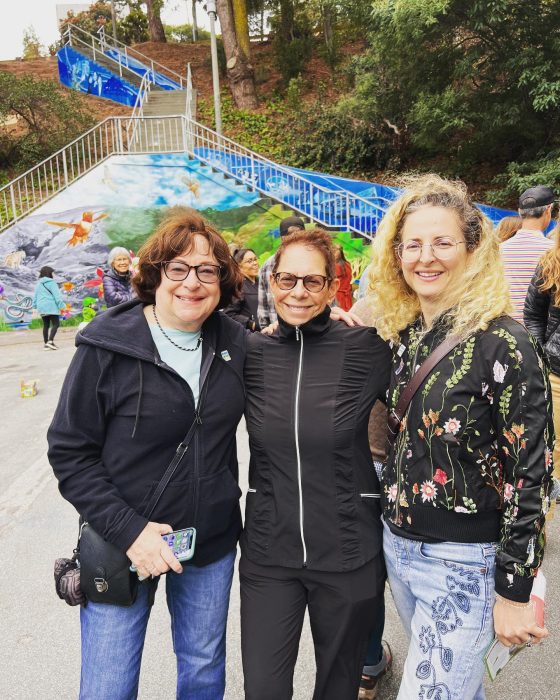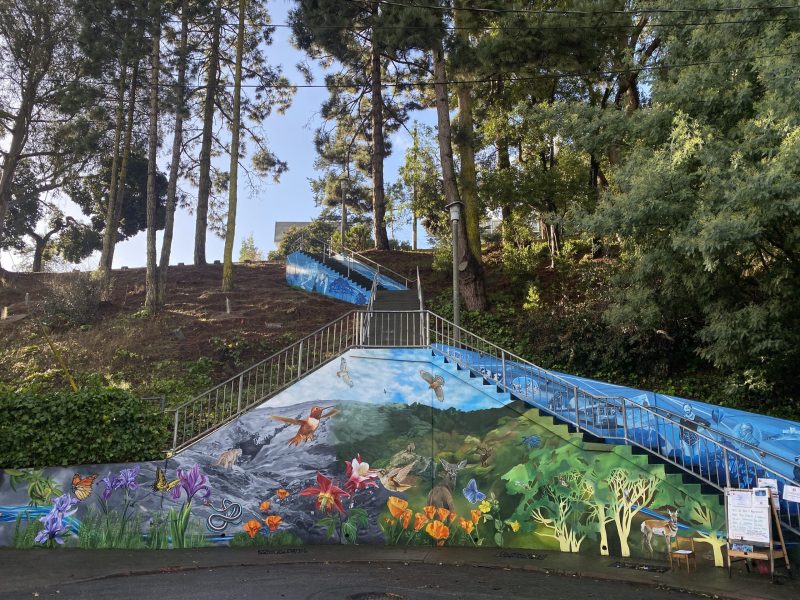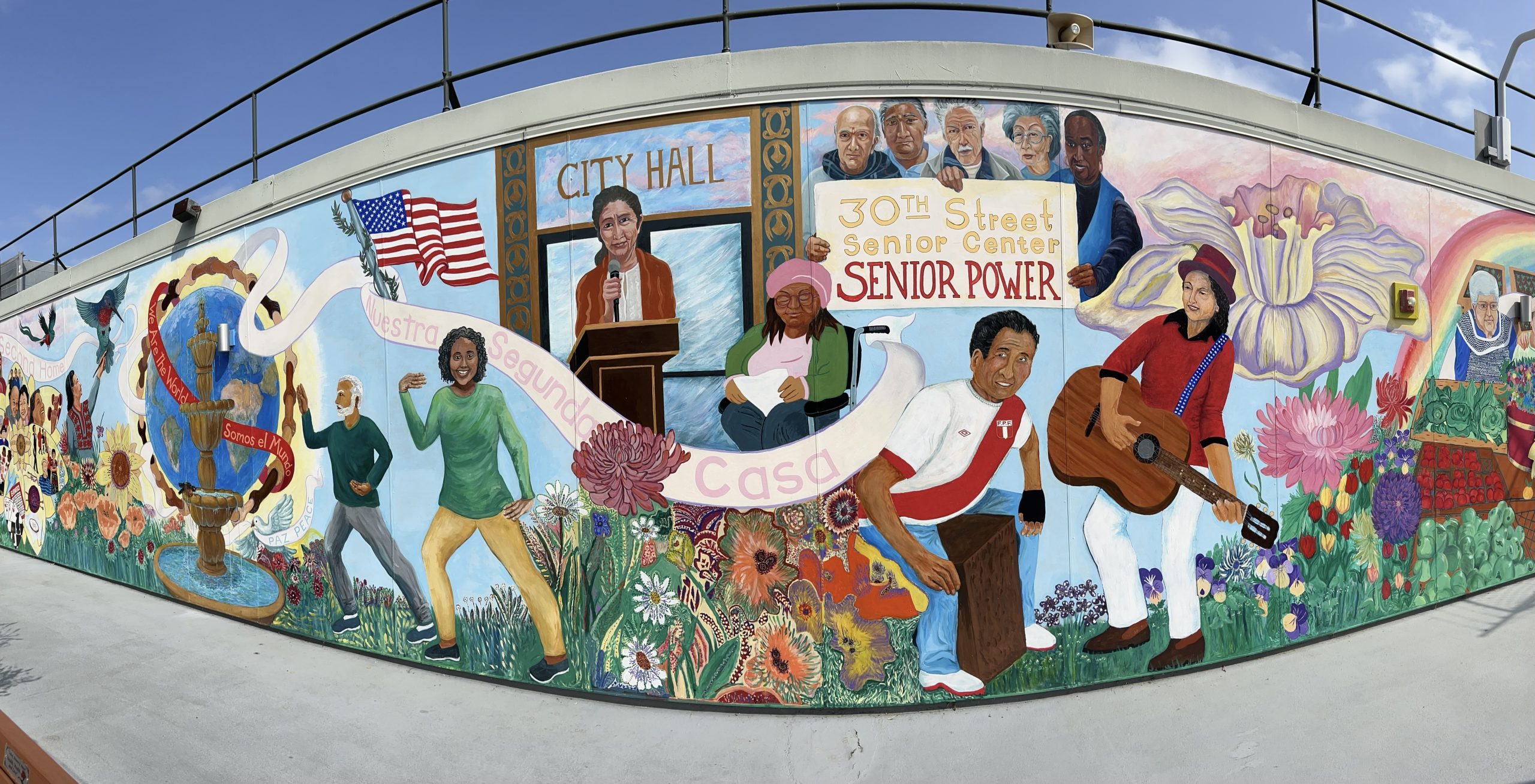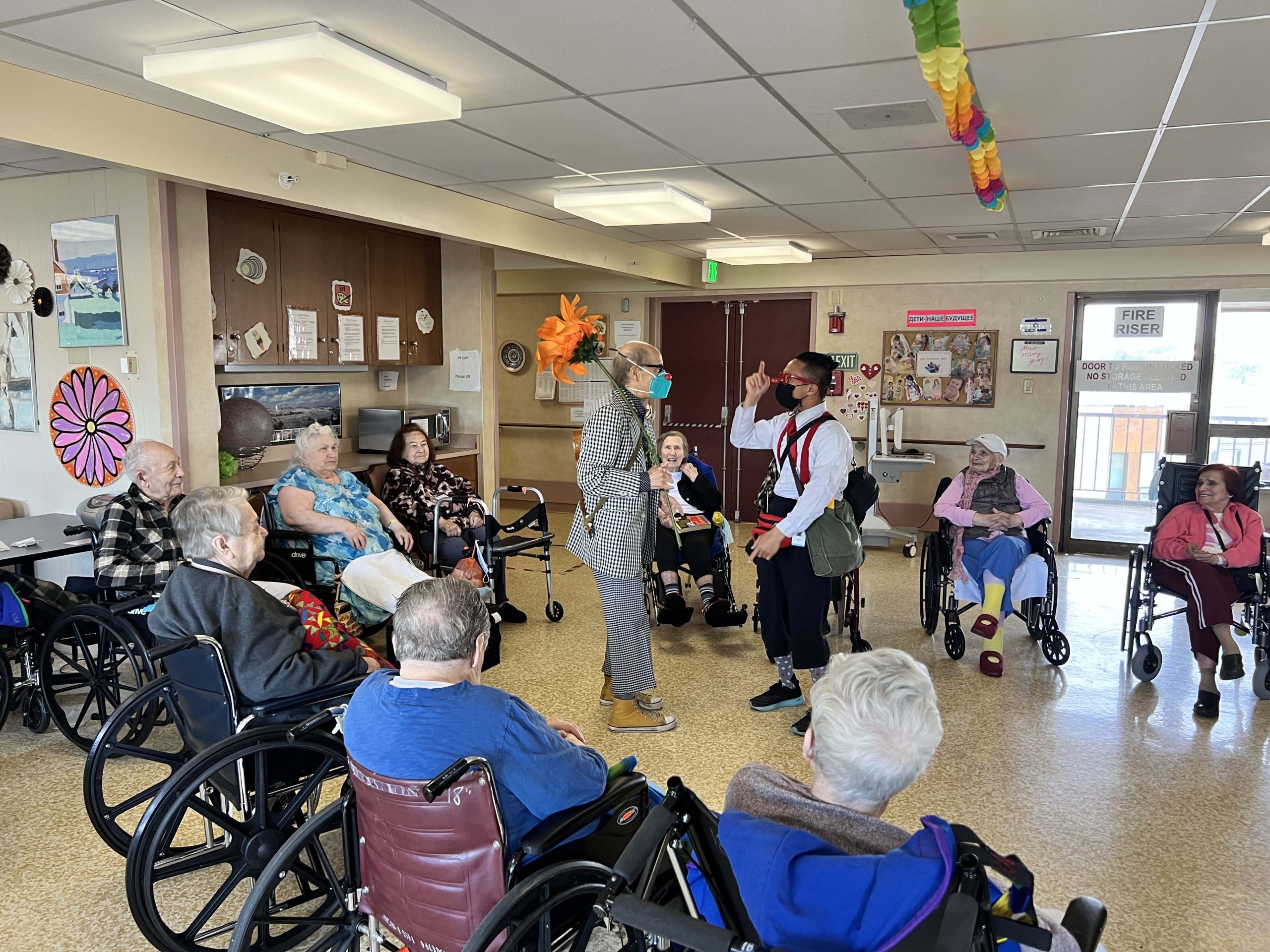Retired Fortune 500 development consultant brings home her lifelong interest in improving cities and communities
Renee Berger’s childhood was full of ice cream and Yankee games and parents who had “great faith and trust in me.”
They were the first of many who were to guide her on her way to and through a career as a management consultant for Fortune 500 companies, top public and private foundations, government agencies and think tanks. “I had several role models and mentors that guided me and opened doors,” she said.
Her father managed Addie Valins, an ice cream parlor/restaurant near Yankee Stadium in the Bronx where the Bergers lived. “I can still remember the names and numbers of some of the players who came into our place after their games for root beer floats and egg creams: Bobby Richardson, No. 1, and Tony Kubek, No. 10,” she said. “My friends were jealous.”

Berger was a latch-key kid who entertained herself after school taking apart music boxes. When she was unable to put them back together, she said, her father “told me to map out the pieces so I would find my way back and that advice served me well throughout my life.”
Her mother also nurtured Berger’s intellect, setting out the Scrabble board when she came home from work. “I loved using my little yellow dictionary and became very fond of words,” she said. “I had an insatiable curiosity and my parents thought that was terrific.” They began dropping her off at the local library branch, where she was watched over by the chief librarian, who made little mountains of books to keep her occupied.
In high school, Berger didn’t have time for much else except her studies and writing for the high school newspaper. She earned a bachelor’s degree in English at the State University of New York at Buffalo in 1969, then returned there for an experimental graduate architectural program. Long interested in how cities are built, she thought she might want to be an architect.
An early mentor
But after talking to the head of the Office of Urban Affairs, she opted instead for a master’s degree in humanities with an emphasis on urban issues. Frank Corbett, one of her earliest mentors, emphasized issues of race equity and grassroots community development in urban revival. At the time, many metropolitan cities were in socio-economic crisis. Eisenhower’s creation of the interstate highway system in the late ’50s led to a residential, industrial and commercial flight to the suburbs.
“He was African American, which in those days was sadly unusual,” she said. “He always role-modeled compassion, teaching me the importance of listening and patience.”
Corbett facilitated her first job, in strategic planning for a community action center. Afterward, she turned exclusively to consulting, which fit her desire for independence and flexibility. Her ability to guide solutions among varied partners over complex issues set the stage for a wide-ranging career. She discovered she “had a high tolerance for ambiguity,” which “was huge.”
Berger was later hired to manage a National Institute of Mental Health staff training grant at two psychiatric facilities in western New York. But wanting to get back to urban studies, she next aimed for a doctorate. She chose George Washington University because “they gave me a teaching fellowship, and it was in Washington, D.C., where I felt I’d learn policymaking.”
After two years with all but her dissertation completed, Berger landed a contract with The Committee for Economic Development, a think tank made up of CEOs from some of the nation’s largest companies. Her job was to supervise a study of hollowed-out downtowns that were taking steps toward revival. The work led to a book, “Public-Private Partnership in American Cities: 7 Case Studies,” with breakthrough findings on revitalizing downtown cores.
Growing expertise
Essentially, it recommended building a dense network of civic organizations with a shared vision promoting entrepreneurship. “While today’s problems of the pandemic-weakened downtowns have different causes than in the ‘60s, ‘70s, some of the same characteristics will likely be the ingredients of those that bounce back,” she said.
One of the cities under review was Baltimore, Maryland, whose waterfront industries had declined. Developer James Rouse, creator of “festival marketplaces” such as Boston’s Faneuil Hall, formed the Greater Baltimore Committee to create “a thriving waterfront offering recreation, eateries, and places to grow a sense of community. This was an essential piece of the puzzle and played a major role in Baltimore’s redevelopment,” she said.
Berger was next recruited as division director for The President’s Task Force on Private Sector Initiatives. That White House experience, the “7 Case Studies” book, and later collaborations with Neal Peirce, a Washington Post reporter who wrote the first nationally syndicated column covering cities and metro areas, she said, “rocket-fueled my career.”
Often commissioned by philanthropic foundations, she and Peirce produced many “state of the city” reports, involving interviews with dozens of civic leaders and concluding with revitalization recommendations. They also wrote thought pieces on fostering neighborhood improvement and grassroots community development. Their expertise garnered invitations to civic meetings across the U.S.
For Berger, it led to consulting invitations and speaking engagements throughout the United States as well as England, France, and Australia.
Public speaking, however, did not come naturally. “Early in high school, I was in a phonetics class and my teacher singled me out for having an irritating New York accent – but everyone did – and after that, I didn’t talk in any high school class again except Spanish,” she said.
Telling a good story
Luckily, another mentor appeared who would help. Astrid Merget, her professor and chair of the Department of Public Administration at George Washington University coached her until she became comfortable speaking in front of an audience.
When a contact from the White House task force asked her to give a speech to the Council on Foundations, an association of the largest U.S. grantmaking foundations and corporations, she took a six-week course on giving a keynote address. “I was terrified, but this was an unbelievable business opportunity as you otherwise can’t get into these meetings,” she said. “I learned how to present information by telling a good story.”
In 1984, Berger took a leap and opened her own management consulting business, “Teamworks” in Washington, D.C. Again, she was “terrified.” Because she didn’t have a financial cushion, she typically had three to five contracts going at the same time.
The Council on Foundations talk garnered new contacts for her Rolodex, and a contract to evaluate the Gannett Foundation’s philanthropy. Developing further expertise in economically challenged areas, she was able “to be a voice,” she said, “for these places and their residents that would be heard in places such as the Ford Foundation.”
Although her work also took her to cities throughout the world, it was many trips to San Francisco that eventually planted the word “home” in her head. She moved here in 1994. Her consulting then shifted toward west coast foundations.
In the Bay Area, the Hewlett Foundation contracted her to shed light on how to strengthen community-led efforts to address social and economic issues in West Oakland, East Palo Alto, and in the Mayfair neighborhood of San Jose.”
After many years of highly analytical work, Berger said, she wanted to see “if I had a right side to my brain.” She took classes in stained glass – though her teachers joked it was the most left-brained art form, puzzling how pieces will relate to each other – and watercolor. She also followed her dream of learning Spanish and described “falling in love” with the various cultures.
“I took salsa lessons, ate Mexican food, and listened to music ranging from mariachi to tango.” She took language intensives in Antigua, Guatemala, Peru and Ecuador, and traveled extensively in Latin America, including Argentina, Uruguay and Colombia.
The U.S.-Mexico border
Language skills and travel experiences opened another door: Berger was hired to track progress and make recommendations on a joint project of the Ford, Mott and U.S. Inter-American foundations to build collaboration among community development programs along the U.S. and Mexico border.
In a separate Mott Foundation project, she was contracted to offer recommendations for strengthening community foundation development in Mexico. The country’s philanthropic sector was just emerging, unlike in America, which has a uniquely large nonprofit sector. “All of Mexico had fewer nonprofit organizations than the city of San Francisco,” she said.
Berger, now 74, retired in 2011 but has been channeling her love of cities toward home as a city-walks guide and organizer of neighborhood beautification.
Since 2014, she has led walks for San Francisco City Guides, sharing the history of the Mission Dolores neighborhood and the murals of the Mission. She recently launched a new walk called “Applause! SF’s Performing Arts Hub.”
During the pandemic, Berger, a big ball of energy in a petite body, got the idea to create a mural on a wall at a forlorn cul de sac on Burnside Avenue and a mosaic on the stairway above it. If not for the efforts of three local women, she knew, the area and neighboring Glen Canyon would have been destroyed by a freeway. She was delighted to discover that “the last survivor of this threesome lived in the house next to the wall.”

The Glen Park community rallied behind the project and the mural, depicting area plants and wildlife, was completed in September. “More than 100 people attended the mural’s dedication and the joy with the project is truly palpable,” she said. “Every day, there are children looking at the depictions of the animals of Glen Canyon.”
But she’s not done yet. Putting mosaics on the stairway is next. It will be funded through grants and the sale of legacy tiles. Already, more than 130 of 200 anticipated to be available have been spoken for, she said. Meanwhile, Berger has been busy painting bugs and animals on rocks – her contribution to a plan for neighbors to add their artwork to a rock garden in front of the mural.






Teddy
Love this mural in the neighborhood! Thank you!
Nancy ware
What an inspiring article about an amazing woman. Thank you. I plan to go see the Glen Park mural. Bravo to Rene Berger; we're so happy she calls SF "home."